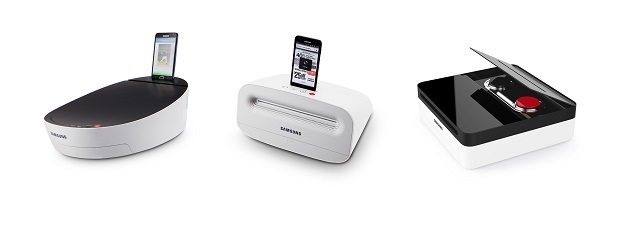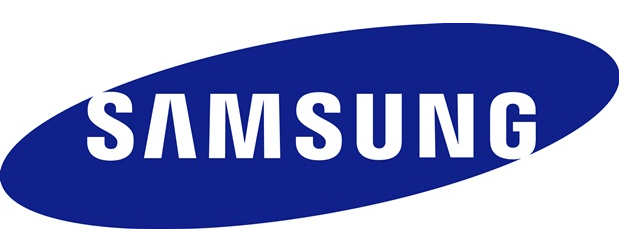Toronto – Many printer manufacturers have tried to challenge Hewlett-Packard for printing supremacy. No one has succeeded. Not Lexmark, not Canon, not Epson and even the American icon Xerox tried and failed.
Next up to challenge HP is Samsung Electronics Co. The South Korean giant boldly predicted recently that it would be leading the A4 printing sector by 2017.
What makes Samsung’s challenge different is that the South Korea giant is not taking on HP on price or with a new colour process, but with an expertise the company knows very; mobility!
Can Samsung’s expertise in the mobility space help them overtake HP in the printing market?
Dr. KiHo Kim, the executive vice president of Samsung and head of the company’s printing solutions business, believes they can surpass HP in the long term. Dr. Kim reiterated to CDN, in an exclusive interview, that the goal is not a 2014 achievement but hoped to be reached by 2017. “That gives us more than three years to reach our goal,” he said.

Besides the mobility aspect, Samsung’s R&D department is also working on a new type of printer that will not have so many moving parts. According to Dr. Kim, those moving parts eventually fail and lead to more wear and tear. Samsung is working on alternatives to those moving parts with new styled electronics and software that will be cheaper to produce and allow the customer more flexibility.
Dr. Kim freely admitted that Samsung has a lot of problems in the printing market specifically on the entry-level segment of the market. Dr. Kim described that market as “bloody.” In Canada, Dr. Kim said that printing segment is not profitable. The strategy now is to move away from the entry-level market and concentrate on the SMB and B2B area.
Dr. Kim’s track record is one of innovation with leadership positions in the smartphone and smart-city businesses for Samsung. “In both those areas the products are connected to each other. I think printers and copiers can be used more in a mobile environment,” he said.
Hyesung Ha, vice president of sales and market for Samsung Printing Solutions, said the company would also target CIOs with a total innovative solution that will distance Samsung product from traditional LAN-based or client server to new 3G and 4G solutions with more cloud-based apps.
“We can create something new in this kind of world such as NFC (Near Field Communications) for mobile printing. It’s just the beginning,” she said.
The thought at Samsung is that currently customers find it too complex to print from a smartphone or even a smart TV. The plan is to work with CIOs to make it easier and create a best end-user experience.
“We want to make it so easy that Dumb and Dumber can print from a mobile device. The first step is to provide that kind of smart experience,” Ha added.
The company has already developed a mobile print app and a native photo printing app. Samsung also held a developers conference in Irvine, Calif., where they invited independent software vendors and channel partners to learn the new platform and build upon the apps. “This is another way to go for us and it will bring in a lot of capabilities to the printing space,” Ha said.
Recently Samsung showcased at the IFA show in Berlin its first NFC-enabled colour laser printer series called the Xpress C460. The company has already developed a mobile print app and a native photo printing app. Samsung also showed off two concept printers the Wave and the Indie. The Wave features minimal, organic design as well as a smartphone docking function. By docking a smartphone to the printer, the user can directly print out saved content on the smartphone. The Indie has mobile docking sound-system.
Samsung is also betting that paperless office trend stays in the myth category. The company worked with market research firm IDC on a new study about printing trends. The study found that users of mobile devices print more than those who don’t use smartphones or tablets. Ha qualified this by saying it was a comparison of users with smartphone over users with PCs.
IDC said in the report that pages printed by single and multi-function printers in 2012 could cover the surface area of New York City 237 times. The report also predicts that more than half of mobile device users will engage in mobile printing in offices by 2015.
“The IDC study is just a month old and we understand it unconventional to what people believe. The fact remains though that all additional devices add content. People are creating more and that 50 per cent of those on a mobile device will print them,” Ha said.
Dr. Kim said that Samsung’s R&D on printers will mirror that of its smartphone and tablet designs.
“We are trying to extend the innovation in smartphones and smart TV in smart printer area. Printers and copiers are business solutions and the smartphone and smart TVs are becoming more involved with business. If we can combine them together it will give us a more advanced scenario and generate more revenues, while offering a better end-user experience,” Dr. Kim said.
Ha added that while wireless printing has been available for years it was too cumbersome. Samsung is trying to change this by making the function more automated. “With a tap on your tablet or smartphone you can print, scan or push to fax a document. This can make collaboration easier and extend to all kinds of workflows.”
There is also a channel opportunity with Samsung’s new line of printers. Dr. Kim said that the company is collaborating with many different types of solution providers at the moment.
Dr. Kim admitted that Samsung is late to the market with printers but they have already made some progressing internationally with channel deals with NCR and Getronics. The plan here will see these global service providers contract to solution providers with Managed Print Services (MPS) offerings.
“We know that this will take some time, but we believe we are on the right track. We are building an open ecosystem for the stakeholders in a whole value chain. This will be a converged environment and as far as I know the others (HP, Canon, Lexmark, Epson, and Xerox) are working on closed solutions and service schemes. We want to be more open so that all solution providers can join us; not just for printers, but all other areas of our portfolio,” Dr. Kim said.
“But No. 1 is to bring a new printing experience to an old fashioned industry and mobility will be the first step.”





